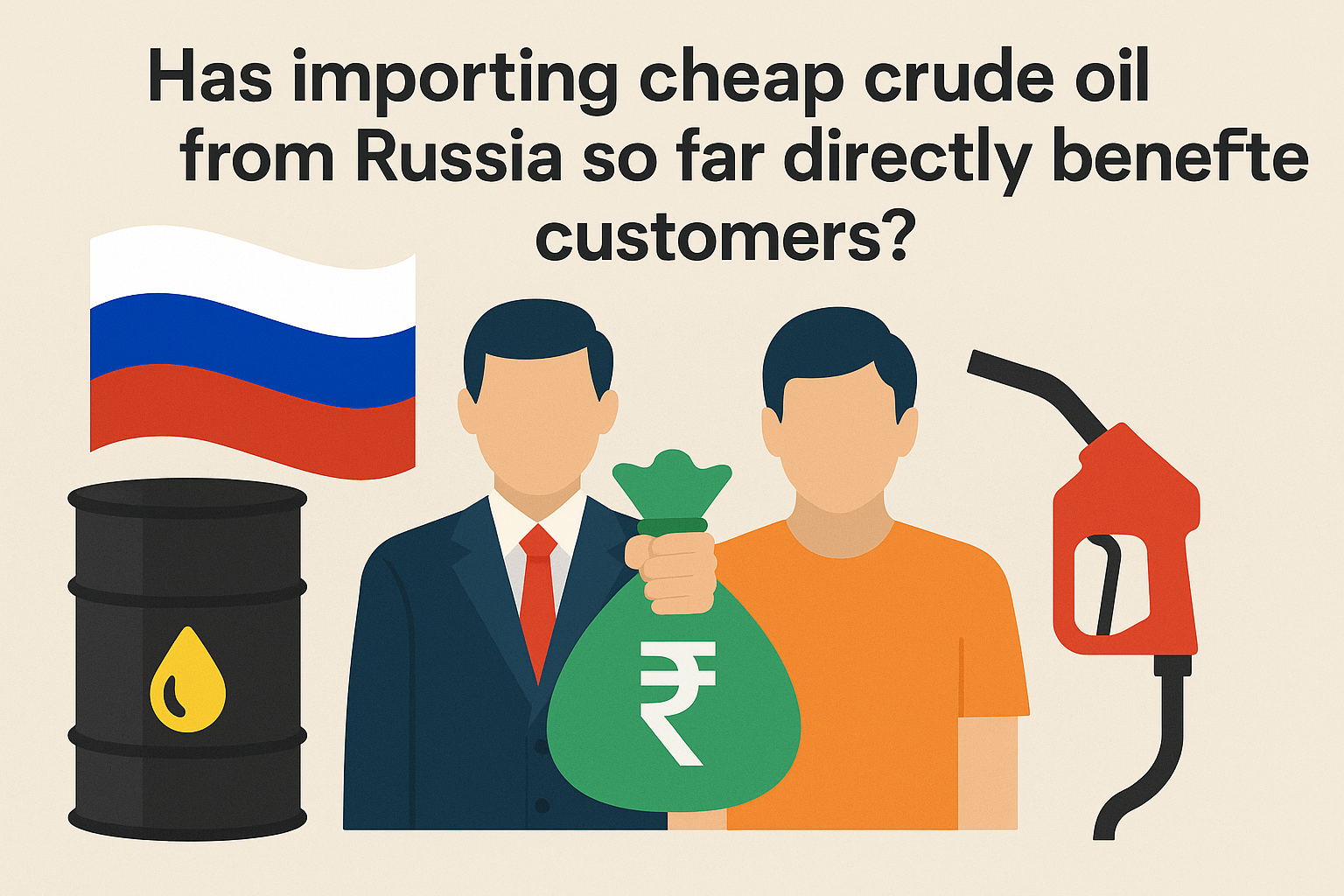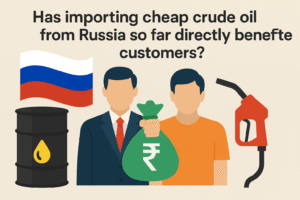Did India’s Cheap Russian Crude Imports Ever Benefit Consumers? Author:Sachin S. Sanghavi
For the past two years, India has been one of the biggest buyers of discounted crude oil from Russia. However, despite the massive cost savings at the national level, the average consumer has not seen any direct relief at the petrol pump.
1. Import Discounts Didn’t Reach Consumers
Russia sold crude to India at a deep discount. For instance, in 2023, India paid around USD 38.86 less per ton compared to Iraq—a saving of roughly $5 per barrel.
Yet, petrol and diesel prices in India remained almost unchanged. The benefits of these discounts were absorbed largely by the government’s tax revenues and by oil marketing companies.
2. Tax and Pricing Structure: Profits for Government & Corporates
Fuel prices in India are administratively determined, with taxes playing a dominant role.
- High excise duties and state taxes ensured that retail prices did not fall.
- Oil companies used the savings to recover previous “under-recoveries” and secure margins.
Thus, cheap Russian oil never translated into cheaper fuel for the common consumer.
3. Refinery & Export Boom
India also leveraged its refining capacity:
- Cheap Russian crude was refined into petroleum products.
- These products were then exported at global prices, boosting corporate profits.
- Companies like Reliance Industries and Nayara Energy reaped significant financial gains.
Key Figures
- Between April 2022 and May 2023, Indian refiners saved around $7 billion (₹57,400 crore).
- From 2022 to 2025, the cumulative savings are estimated at $35 billion.
- Without Russian oil, India would have paid $9–11 billion more annually on crude imports.
Why Consumers Saw No Benefit
- Taxes remained high, keeping retail prices steady.
- Oil firms absorbed the discounts as profit margins.
- Savings supported India’s macro-economic stability rather than household budgets.
Political & Economic Fallout
While Russian crude imports helped India control inflation and energy security, they also sparked geopolitical tensions. The United States has already moved to raise tariffs on India, signaling that the burden may soon fall directly on Indian consumers.
Summary Table
| Aspect | Outcome |
|---|---|
| Refiners’ savings | $7 bn (2022–23) → $35 bn (2022–25) |
| Consumers | No direct reduction in fuel prices |
| National benefit | Energy security, inflation management, economic stability |
| Geopolitical impact | Rising US–India tensions, new tariff threats |
Conclusion
Cheap Russian oil has undoubtedly benefited Indian refiners and the government, but not the Indian consumer. With new tariffs in play, the impact may soon shift from being invisible at the fuel pump to visible in overall household inflation.
BreakingNews #CurrentAffairs #WorldNews #IndiaNews #GeoPolitics
IndiaEconomy #IndianConsumers #PetrolDiesel #Inflation #IndiaOilImports
SachinSanghavi











Post Comment